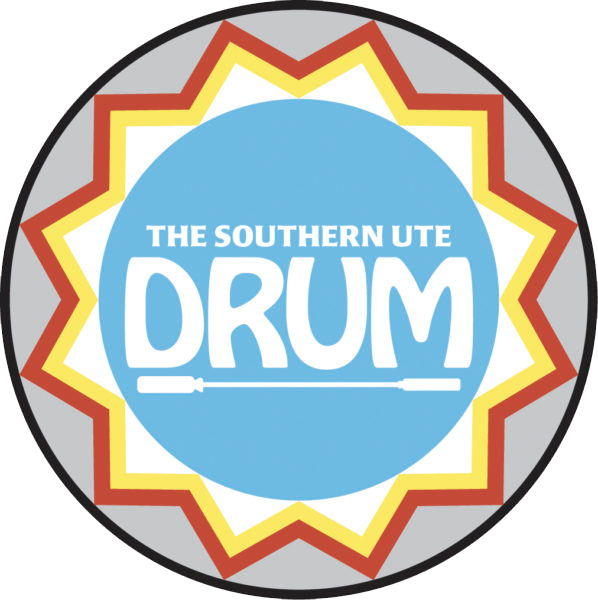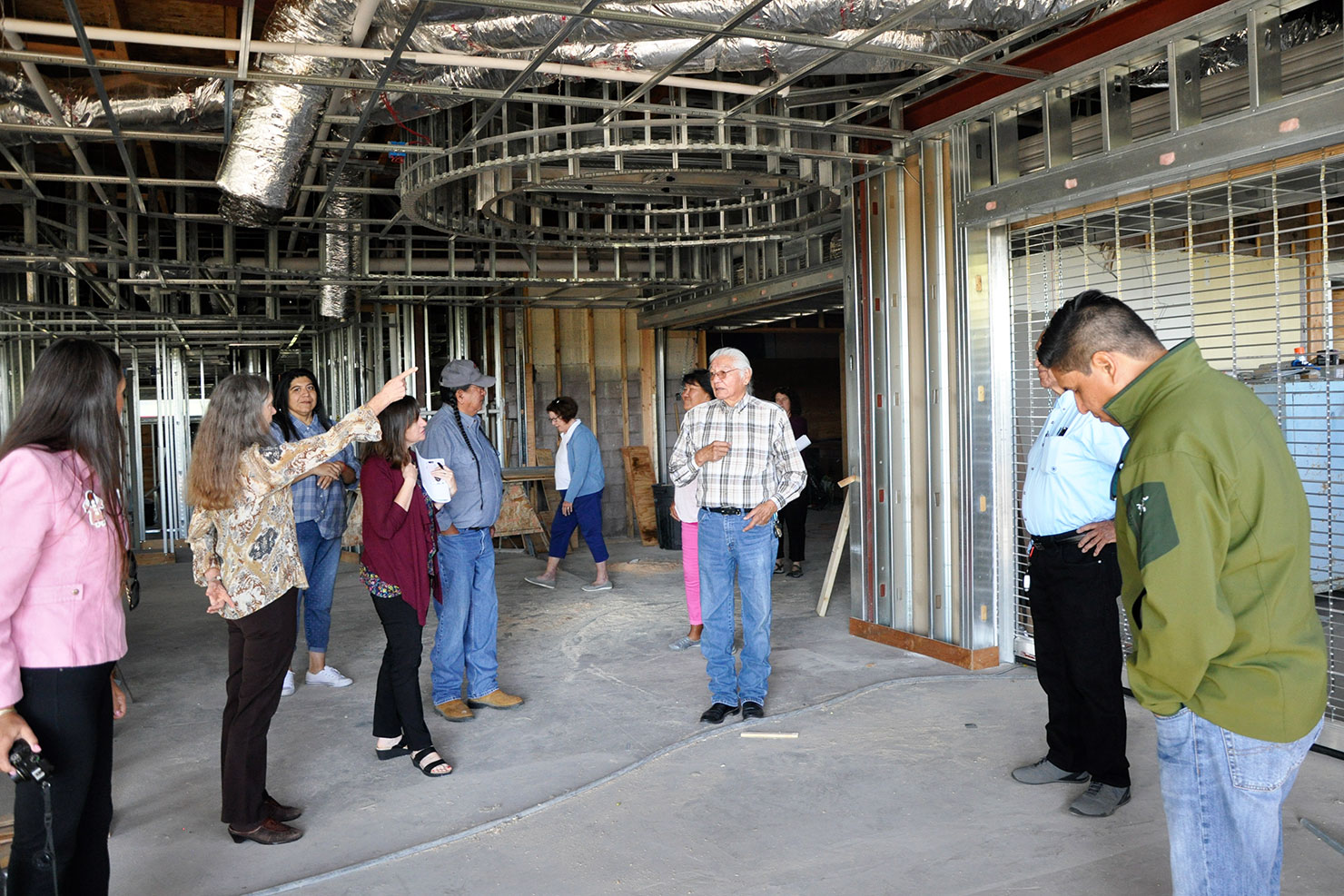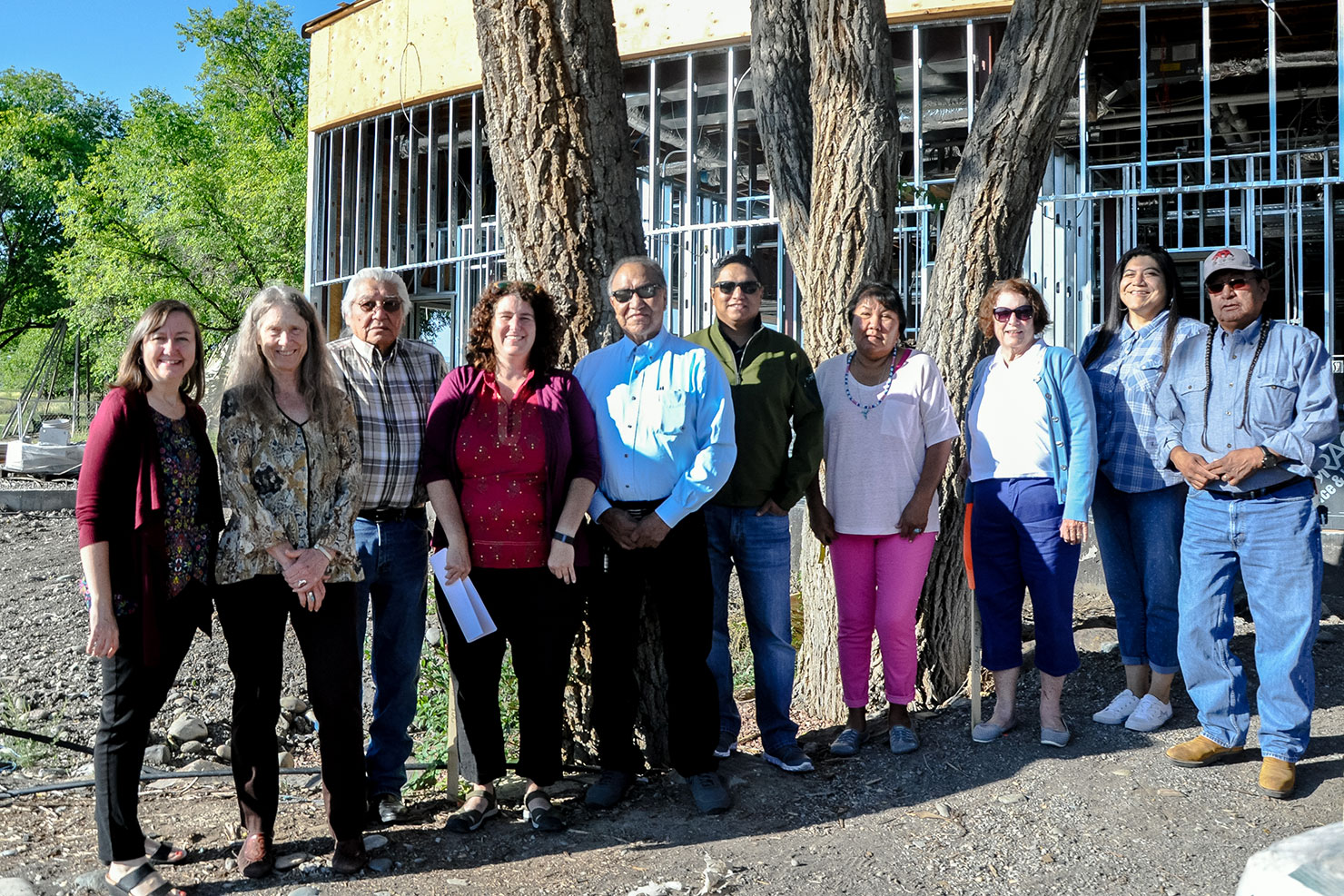The expansion of the Ute Indian Museum that has been in the works since 2013 is approaching the final stages of completion. The museum in Montrose, Colo. has a projected opening date of June 2017. Cultural representatives from the three Ute tribes were in Montrose Thursday, Aug. 25 to meet with History Colorado staff for the 10th Ute Indian Museum Consultation.
The consultation began with a tour of the museum construction site. Tribal reps were guided through the expanded building to get a feel for what the layout was going to be. History Colorado also provided a virtual tour of the museum showing where exhibits may be placed.
Going into further detail, the consultation group went over each room starting in the lobby. History Colorado wanted to know what content should be in public areas and what should be kept in exhibits. This becomes important because when the museum hosts special events in the future alcohol can be served in the public areas like the multi-purpose room, patio and lobby. History Colorado wanted to know the tribes’ preference on what should be housed in the lobby since it is a public area.
“I don’t think there should be alcohol in the museum … keep it away from the exhibits these are not just replicas these are things we handle with reverence,” Betsy Chapoose, Northern Ute Cultural Rights and Protection Director said.
Chairman Clement J. Frost agreed with Chapoose.
“It’s maintaining the history, be respectful to the culture and the Utes,” he said. “Alcohol wasn’t
part of our traditions.”
The group decided to keep the lobby area a more general space instead of having culturally sensitive content housed there. So that during special events all exhibits can be closed off. It is important to note that History Colorado doesn’t allow alcohol – or any drinks – in exhibit areas of any of their museums so the same holds true for the Ute Indian Museum.
The reps also discussed the importance of incorporating the Ute language. Terry Knight Sr., Ute Mountain Ute Tribal Historic Preservation Officer suggested adding Ute words on signs and exhibits next to the English terms – a small detail that could have been overlooked if these consultations were not taking place.
All the consultation meetings have directly informed the decisions of architecture, and content of the museum. History Colorado has asked many questions of the tribal reps including preferred spellings of names and places, the design of placards and what content will actually appear in the exhibits.
Tribal reps also made suggestions on making updates to exhibits in the museum. It was suggested by Chapoose that the dioramas be replaced with something more intriguing. She argued that the dioramas are out dated. Southern Ute Councilwoman Amy J. Barry agreed and said that there is a better way to depict Ute life than dioramas.
This led to discussion on technology and how it would be added to the museum to enhance the visitors’ experience. Suggestions included video and audio attractions. It was also recommended that elders from the three Ute tribes tell the stories of the Ute people.
“Providing elders with a voice to tell the story … I think it is important component of the museum,” Barry said.
The group also tackled how to tell the story of the treatment of the invasion and removal of Utes.
“Tell the story as it is,” Alden Naranjo, Southern Ute NAGPRA coordinator said. “Tell why there was a movement to get rid of the Utes.”
Chapoose agreed, “ We’re acknowledging history … it’s part of history, you have to put it there.”
From here History Colorado will take all the suggestions and begin to mold an even clearer image of what the museum will look like when it opens.
In October, History Colorado will be sending the tribes a draft list of artifacts that will go into the exhibits. History Colorado is asking the tribes for feedback and suggestions on the list.
The next Ute Indian Museum Consultation is set for December and will take place in Denver. At this meeting all the text appearing in the exhibits will be reviewed by the tribal reps. The public opening of the museum is slated for June 2017.




